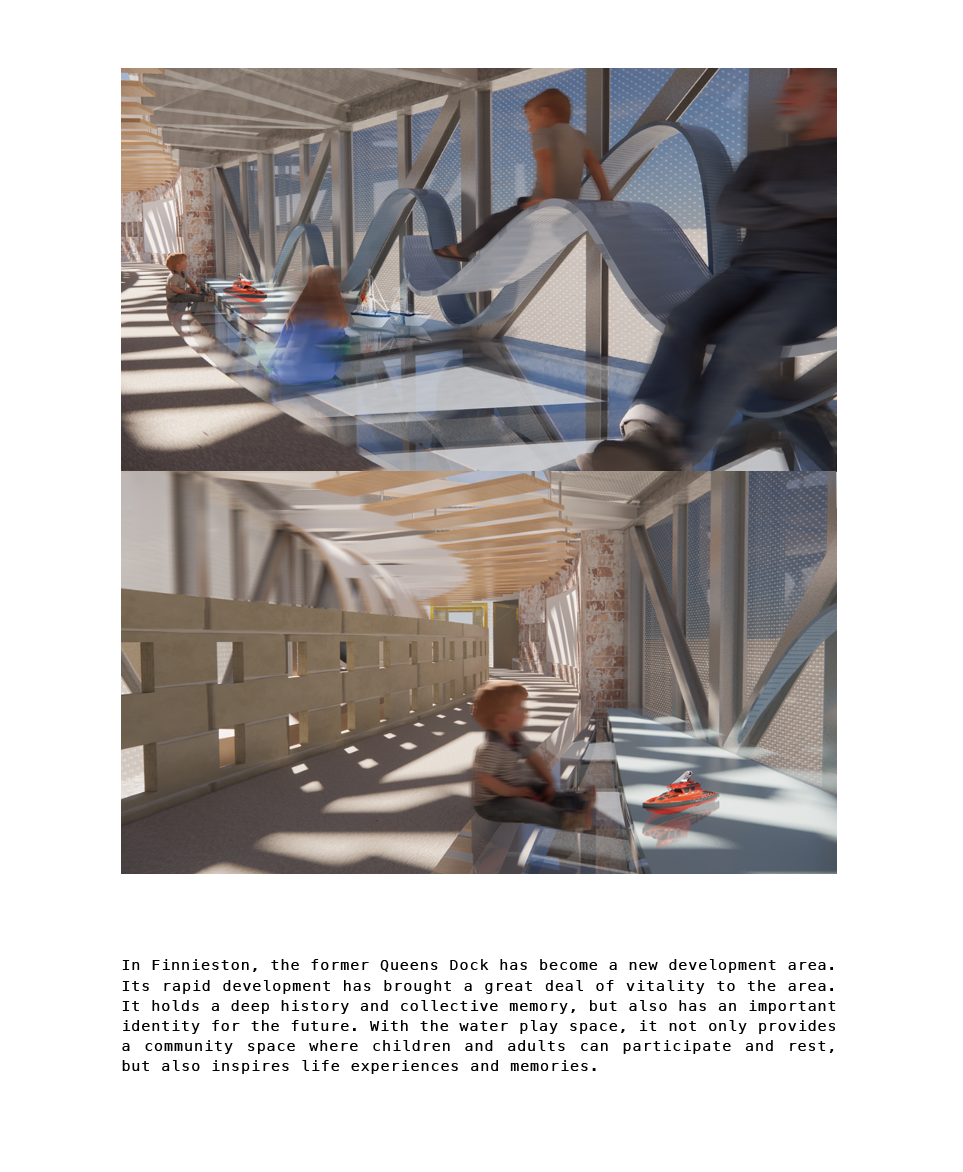Zhongyi Wang

My intersectional background in art and craft allows me to focus on the marriage of culture and space. My passion for observing and dissecting my surroundings has led me to delve into the relationship between humans and space. I strive to create environments that tell a story – where every element has a purpose and every corner reflects a piece of history or culture. My creative process involves not only the physical spaces, but also understanding the emotions they evoke and the experiences they bring.
Contact

Seams of transformation
This project began as an exploration of place attachment relationships. The emotional connection to place was first identified in Fried’s (1963) study, which was set against the backdrop of the psychological impact of forcibly displaced populations in large-scale urban regeneration projects. When place attachment is disrupted, it leads to a loss of connection to that place and the associated meanings and memories it holds, which is also known as place attachment disruption. This can also be considered an urban traumatic event. When the urban landscape changes, it may disrupt an individual’s emotional balance and attachment to the urban environment, eroding the familiarity and comfort associated with it. The research context for my project therefore focuses on the impact of the construction of the M8 motorway in Glasgow on Charing Cross and the surrounding communities.
Through historical research and fieldwork, my site analysis and design direction were categorized into three components: loss, legacy, and regeneration. After mapping and conceptual modeling of these three components, they were configured into new forms and experiences that more accurately link collective memory to the healing of urban trauma. My vision is to create a monumental and healing space that repairs the “scars” of broken connections caused by urban construction, reweaves the historical urban fabric, and promotes the development of healthy communities.
Host- A Connection Point
For my second term project-Host, the type of site I was allocated was a ‘service gantry’. Traditionally, a gantry is used to support equipment such as cranes, signalling machines or cameras. However, in this case, my site was more specific as it spanned the railway but had no signals or instructions. This is because it is a cable bridge, specialized in carrying high voltage cables for power companies. Whilst exploring the definition of Host, the form of the wire pipe and the energy transmitted began to remind me of objects with similar functions and forms, such as the brain and the roots of a tree. If transmission is the process, then the host is a manifestation of energy or information gathering, and the host can be defined as a connection point for sharing information. Based on this, I explored the relationship between the site and its surroundings and history, and how it can take on the role of a place that gathers people and transmits information about history and the present.






























